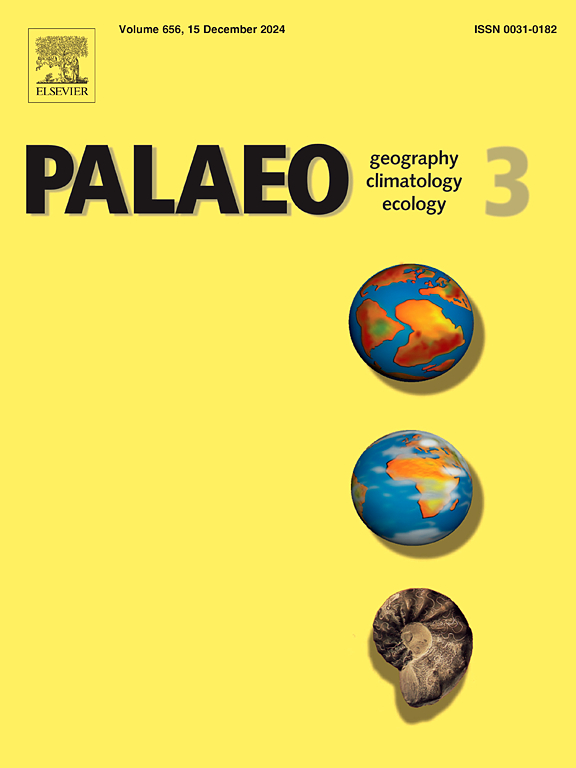Late Aptian–middle Albian bacinellid oncoid event, Apuseni Mountains, Romania: a possible link to OAE1b?
IF 2.6
2区 地球科学
Q2 GEOGRAPHY, PHYSICAL
Palaeogeography, Palaeoclimatology, Palaeoecology
Pub Date : 2025-02-11
DOI:10.1016/j.palaeo.2025.112807
引用次数: 0
Abstract
A multi-tool investigation, including microfacies analysis, morphometric measurements, statistical analysis, SEM microscopy, biostratigraphy, and stable isotopes, was conducted on Lower Cretaceous oncoid-bearing carbonate beds that are well exposed in a limestone quarry in the Northern Apuseni Mountains, Romania. These carbonates are characterized by abundant bacinellid oncoids with thick cortices exhibiting a typical microfabric of micritic threads and spar-filled vesicles (bacinellid meshwork), that formed in a low-energy, inner-platform environment. The growth patterns of the bacinellid threads that form the meshwork of the oncoid cortices, such as constant thickness, branching modes, and bag-shaped/globular swellings, share close similarities with those developed by endolithic marine fungi. This, together with clotted micritic patches and frequent association with Lithocodium aggregatum sensu Elliott, 1956, suggests that these oncoid structures could have been generated by a microbial consortium involving bacteria, possibly fungi, and algae. Biostratigraphic and stable isotope data indicate that these bacinellid oncoid carbonates overlapped with the latest Aptian–earliest Albian Oceanic Anoxic Event 1b (OAE1b set/cluster). Our results on the bacinellid oncoid structures could support a possible relation between their extensive development and OAE1b, since bacteria, fungi, and other microbial communities are known to play an important role in carbon cycling and the restoration of oxygen levels in marine environments.
求助全文
约1分钟内获得全文
求助全文
来源期刊
CiteScore
5.90
自引率
10.00%
发文量
398
审稿时长
3.8 months
期刊介绍:
Palaeogeography, Palaeoclimatology, Palaeoecology is an international medium for the publication of high quality and multidisciplinary, original studies and comprehensive reviews in the field of palaeo-environmental geology. The journal aims at bringing together data with global implications from research in the many different disciplines involved in palaeo-environmental investigations.
By cutting across the boundaries of established sciences, it provides an interdisciplinary forum where issues of general interest can be discussed.

 求助内容:
求助内容: 应助结果提醒方式:
应助结果提醒方式:


